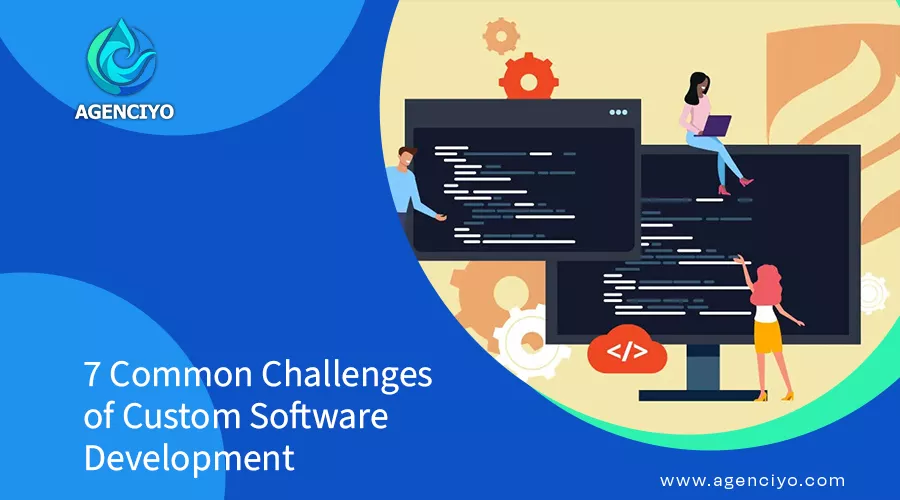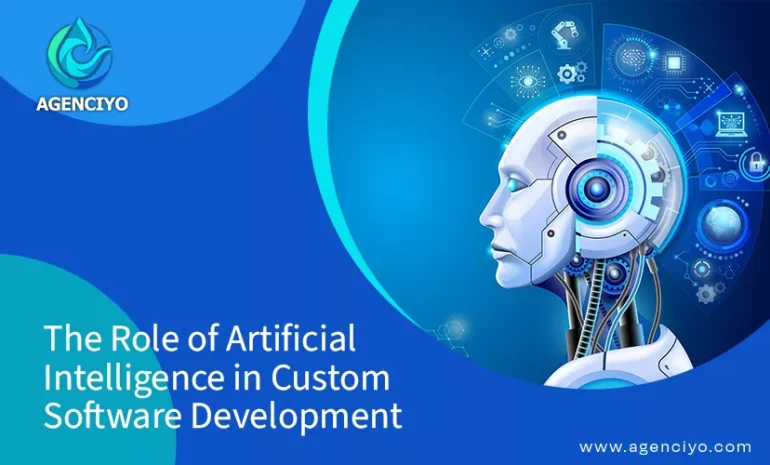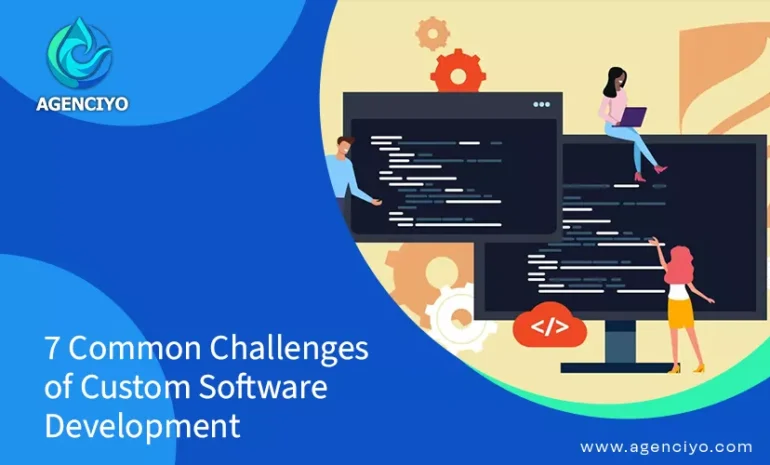Developing custom software challenges is alluring. You’re creating something tailor-made for your company, with the functionality and features you really want. Yet, as most teams quickly discover, custom software development isn’t always plain sailing. You May Also Read: A comprehensive guide to custom software development for business
Whether building a new app or implementing new internal systems, there are some universal challenges that may appear along the way. At Agenciyo, we’ve witnessed how custom software development challenges accord.
7 custom software development challenges
Let’s have software engineering challenges:
Unclear Requirements
One of the primary reasons software projects fail is that the requirements aren’t defined very clearly upfront. Perhaps the client isn’t entirely clear on what they require, or perhaps the development team is making assumptions that weren’t explicitly agreed upon. The outcome? Miscommunication, wasted time, and a product that falls short.
How to prevent it:
Begin with detailed discovery sessions. Get everyone aligned on goals, non-negotiable features, and how the software will be utilized. Maintain open communication throughout the project so that updates and changes can be dealt with easily. Explore More: The top ten mistakes to avoid in custom software development
Delays in Timelines
Custom software development challenges projects tend to take more time than planned. This may be because of technical obstacles, overestimation of simplicity, or scope creep, where the project continues expanding beyond the initial plan. Delays not only affect your launch date but can also lead to higher development costs and missed business opportunities.
How to avoid it:
Break the project into phases with realistic deadlines. Use agile development methods to adapt quickly and keep things moving. Make sure you’ve accounted for testing, revisions, and any unforeseen adjustments.
Budget Overruns
It’s easy enough to start with a set budget and end up spending much more. Sometimes because new features are added along the way or unexpected technical problems. Without planning, the cost can get out of control.
How to avoid it:
Clear your project scope and stick to it. Have a contingency fund set aside for unexpected expenses. Most of all, use a development partner that has open pricing and continuous cost reporting.
Quality Assurance (or the Lack thereof)
Even the most well-designed software can crash if it’s released with bugs or performance issues. Rushing through QA or skipping testing usually leads to inferior user experiences and damage to your reputation.
How to avoid software engineering challenges:
Make testing an integral part of each development stage. Use a combination of automated and manual testing to identify both functional bugs and user interface flaws. And don’t underestimate the value of having a good QA team.
Integration with Existing Systems
Most businesses already have other systems and tools established—accounting software, CRM software, inventory management, etc. Getting your new custom software to get along with all these can be more difficult than it would otherwise be.
How to avoid it:
Start with a thorough audit of your current systems. Sniff out compatibility issues up front. Make sure your development team understands APIs and system integrations, and don’t be afraid to hire outside assistance when needed.
Scope Changes Mid-Project
As development progresses, it’s natural that there are going to be new ideas and new features emerging. Being flexible is a good thing, but always changing the scope creates delays, adds costs, and causes confusion. This is one of the common custom software development challenges.
How to prevent it:
Set hard boundaries for the initial phase of the project. Have a change management process so that any changes are looked at, approved, and scheduled. Focus on business goal-driven features and put “nice-to-haves” off until later releases.
Post-Launch Maintenance
Now that the software is launched, the job isn’t done. Bugs will appear, updates will be needed, and new features might be requested as your business grows. If you lack a maintenance plan, your software could end up outdated or unreliable down the road.
How to prevent it:
Choose a development partner that offers ongoing support. Think ahead about updates, security patches, and performance improvements. View software as a living product; it needs to be cared for and nourished after it ships.
At Agenciyo, we guide companies through the intricacies of custom development with a commitment to collaboration, openness, and outcomes. If you’re about to embark on a custom software project and want to get it done correctly, contact us and take advantage of our custom software development service.
Conclusion
Custom software development can bring incredible value to your business. But only if you’re prepared for the challenges that come with it. From setting clear expectations to ensuring long-term maintenance, each step of the process requires thoughtful planning and communication.


